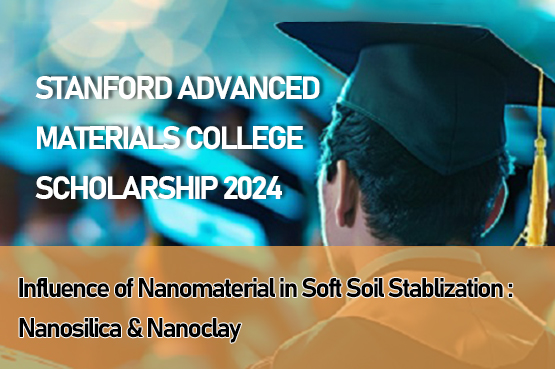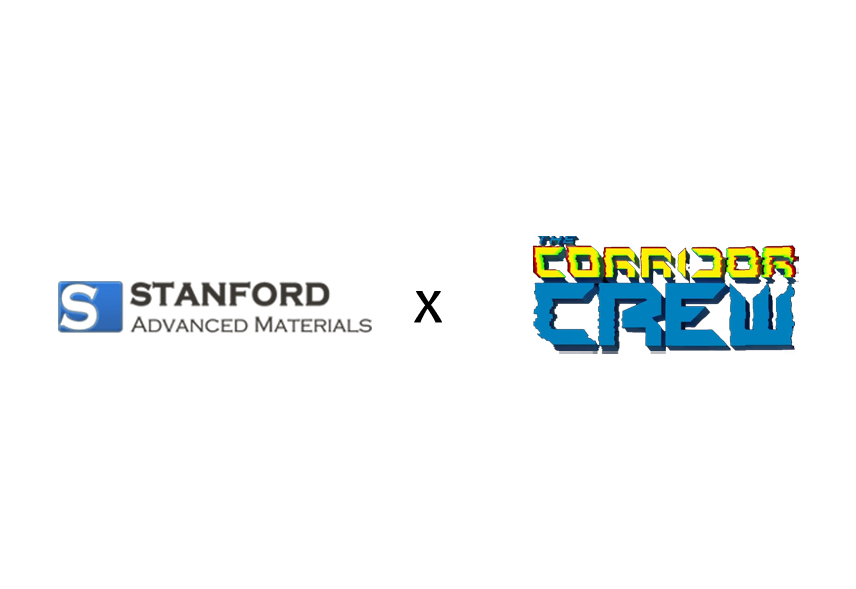The 2019 SAM $1,000 College Scholarship Contest Winner
The 2019 Stanford Advanced Materials $1,000 College Scholarship Contest ended last month with a record number of student submissions. Congratulations to the winner:
Charles Boyle
The University of Texas at Austin
Entrants were asked to write an essay to share their experience with advanced materials in life and talk about what impact it will have in the future.
We received more than 200 submissions from students in the U.S. and Charles came out on top. He took home $1,000 for sharing his cool experience and thoughtful ideas about Refractory Metals in the essay, which we’ve published here with their permission:
Charles Boyle
At the beginning of 2018, I started what would soon become the coolest experience of my life: a spring internship in NASA Marshall Space Flight Center’s Green Propulsion Lab. During this internship, I was involved in two main projects: the design and fabrication of NASA’s first low toxicity “green” monopropellant loading system for spacecraft fueling, as well as the design of a CubeSat pressurization module optimized for green propellant interfacing. Through these two experiences, I gained an in-depth understanding of the advantages of green propulsion systems holds over current hydrazine monopropellant systems, as well as the problems holding back widespread green propellant usage in spacecraft missions.
From my experience at NASA, I discovered that one of, if not the main, issue associated with green propellants is simply the temperatures they require for proper combustion. Common materials that are otherwise widely used in combustion chamber assemblies cannot stand the excessively high temperatures associated with green propellant thermal decomposition. Despite the various benefits green propellants hold over traditional monopropellants - i.e. lower toxicity, higher impulse density, easier handling - if commonplace materials cannot survive the high temperature and/or oxidative combustion environment associated with green propellants, these propulsion systems become impossible.
This is where refractory metals come in. The future of green propulsion lies in the advancement of refractory metal (RM) manufacturing techniques. Refractory metals such as Iridium and Rhenium are of utmost importance to the design of a green propellant thruster, as they are some of the very few materials that can withstand the temperatures associated with sustained green propellant thermal decomposition. However, their timely and expensive fabrication methods have limited the usage of green propulsion systems to a select few missions. Additionally, the current use of refractory metals in green propellant systems is, for the most part, limited to subtractive manufacturing. Additive manufacturing techniques associated with refractory metals, such as printing rhenium nozzles on a DMLS print-bed, are relatively unexplored. Therefore, the development of cheaper RM subtractive manufacturing techniques, as well as reliable RM additive manufacturing techniques, could completely change the field of satellite propulsion systems. These RM manufacturing capabilities would allow green monopropellant systems to completely replace current monopropellant systems such as hydrazine thrusters, which would in turn dramatically decrease average monopropellant propulsion system toxicity and significantly increase their impulse density.
Why is this important? Despite being a very specific technical issue within the propulsive sciences, refractory metals will have a large impact on the aerospace sector once their associated manufacturing techniques become more efficient. The main benefit that green propellants offer is higher impulse density, or in other words, the higher impulse that the propellants can provide to a spacecraft per unit volume of propellant. This is not a small technical detail. Higher impulse density could make the difference between the acceptance or rejection of a groundbreaking mission in its mission design phase. In other words, having a surplus of impulse density could very realistically be the final factor that allows a mission to move forward and eventually take what was once science fiction and make it a reality.
For example, the mission that is thought to be the most critical astronautical undertaking of the upcoming decade is a Mars Sample Return (MSR) mission. The area of the mission requiring the most state-of-the-art engineering is the Martian Ascent Vehicle (MAV). The MAV is the spacecraft that will lift the Martian surface sample to Martian orbit. This type of launch has obviously never been done before. Most attempts at designing a MAV use either solid, hybrid, or monopropellant propulsion systems to carry the payload to orbit, and proposed MAV propulsion architecture usually falls short of being able to provide the necessary impulse to bring the payload to Martian orbit. This is exactly how usage of refractory metals could bring about the success of one of the most important missions mankind has ever performed. By advancing RM manufacturing techniques to the point at which RMs could be used in the design of a “green,” high-performance MAV propulsion system, this could allow for the success of an MSR mission, bringing humans one step closer to stepping foot on the Martian surface.
Like the brilliant aerospace engineers who came before me, I want the products of my life’s work to launch humans and robots beyond Earth’s orbit onto untouched celestial bodies. To enable this dream, mankind needs to first create affordable and reliable next-generation propulsion systems. Refractory metals are the key element that will allow current hydrazine monopropellant systems to transform into more efficient, more reliable green propulsion systems. These green propulsion systems will eventually revolutionize the small-satellite propulsion field, and enable the lofty goals humanity holds for the future of space exploration.
Reference: Cavender, D. P., Marshall, W. M., & Maynard, A. P. (n.d.). 2018 NASA Green Propulsion Technology Development Roadmap.
Great work, Charles! Best wishes to you throughout your college career and beyond.




